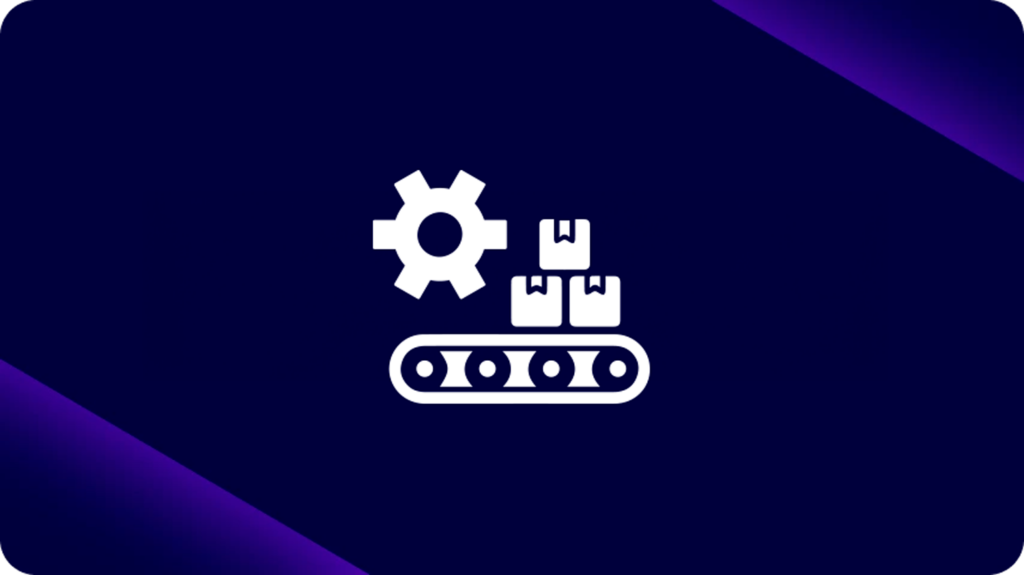setembro 22, 2022
Um fator essencial para o sucesso empresarial hoje é a capacidade de responder rapidamente às mudanças. Seja para se adaptar a uma tecnologia emergente ou a uma transformação na sua indústria, é fundamental conseguir pivotar com agilidade.
Isso exige que todos os seus dados e sistemas estejam acessíveis onde e quando forem necessários. Para muitas organizações atuais, isso significa descobrir como integrar sistemas legados e dados isolados.
Com apenas 6% dos profissionais de TI corporativa confirmando que suas organizações implementaram uma estratégia de integração com sucesso, fica claro que muitas empresas ainda estão na fase de planejamento.
Assim como qualquer mudança significativa em suas operações, escolher as ferramentas certas de integração pode ser um desafio. Vamos analisar as perguntas que você deve fazer ao buscar novas ferramentas de integração de sistemas.
>> Agende uma demonstração personalizada com nossa equipe de especialistas e veja como o iPaaS da Digibee trará eficiência ao seu negócio.

Você realmente precisa de ferramentas de integração?
Historicamente, muitas empresas confiaram em um modelo centralizado — gerenciado por uma única equipe — para conectar todos os diferentes pontos dentro da organização. No entanto, esse fluxo de trabalho pode gerar atrasos e gargalos em sistemas modernos, que dependem de conexões ágeis entre componentes distribuídos.
Modelos legados também dificultam a substituição de aplicações padrão por soluções específicas que atendam melhor às necessidades do negócio e de seus clientes.
No mundo digital de hoje, poucas empresas têm o luxo de enfrentar períodos de inatividade ou atrasos para adotar novas ferramentas de integração, por mais vantajosas que elas possam ser no longo prazo. Por outro lado, não integrar não é uma opção: depender de sistemas desconectados e transferências manuais de dados deixará as organizações muito atrás de seus concorrentes nativos digitais.
Escolhendo a solução de integração certa
Ao buscar as ferramentas de integração certas para sua organização, diversos fatores devem ser considerados, como:
- Requisitos básicos, incluindo custo, cronograma e prioridades específicas
- Impacto na equipe, analisando como a solução afetará os membros do time
- Efeitos na operação diária, avaliando possíveis interrupções ou melhorias nos processos
- Objetivos de curto e longo prazo, considerando o que se espera alcançar com a integração
Faça as perguntas certas e tenha clareza sobre as respostas antes de se comprometer com qualquer ferramenta ou sistema de integração de dados.
1. Requisitos básicos
Comece pelo essencial. Independentemente dos seus recursos ou das suas ambições futuras, é provável que existam algumas limitações práticas a considerar. Estabeleça os parâmetros da sua busca por ferramentas de integração desde o início e procure por soluções iPaaS que se encaixem nesses critérios.
- A ferramenta escolhida pode lidar com todos os tipos de integração de que você precisa?
- Ela pode ser implementada dentro do cronograma definido para a integração? Isso é especialmente relevante se houver outros planos estratégicos dependentes da integração.
- A solução está dentro do orçamento disponível? Considere custos iniciais e recorrentes.
- Ela atende a requisitos específicos de segurança ou conformidade da sua organização?
2. Efeitos em sua equipe
Depois de considerar os requisitos básicos, avalie o impacto que as ferramentas de integração terão no seu time. Uma solução que parece ideal no papel, mas é inadequada para os principais usuários, provavelmente não alcançará os resultados desejados.
- Quem usará a ferramenta de integração?
- Desenvolvedores?
- Engenheiros e arquitetos?
- Uma combinação de ambos?
- Quão acessível a solução é para membros não técnicos da equipe? (Uma solução muito técnica pode aumentar a demanda de sua equipe de TI.) Qual equipe será responsável por gerenciar e executar a estratégia de integração? As ferramentas escolhidas fortalecerão a equipe existente ou será necessário contratar novos especialistas?
Com os requisitos fundamentais definidos e o impacto na equipe avaliado, é hora de analisar como a solução escolhida afetará os negócios – tanto nas operações diárias quanto nos objetivos de longo prazo.
3. Operações diárias
Uma mudança significativa na forma como sua organização interage com sistemas e dados pode ser disruptiva. Avalie o impacto que as ferramentas de integração de dados ou sistemas podem ter nos seus processos.
- Quanto tempo levará o processo de integração? Uma transição mais longa pode gerar atrasos e soluções alternativas onerosas para o negócio.
- Qual será o nível de interrupção nas operações regulares? É essencial entender o impacto potencial no seu negócio e nos seus clientes.
- Haverá tempo de inatividade? Quanto? Como você lidará com isso?
- Quanto treinamento sua equipe precisará? O orçamento comporta essa demanda? Como a empresa operará durante o onboarding?
- Como a ferramenta escolhida afetará os sistemas atuais? Você conseguirá gerenciar esses impactos?
- Ela funcionará com sistemas legados ou de nicho dos quais sua organização depende? Se não, como você planeja lidar com isso?
4. Objetivos de Negócio
Todo investimento deve impulsionar seus objetivos de negócio, e as ferramentas de integração iPaaS não são exceção. Avalie como a solução escolhida contribuirá para o sucesso e crescimento da sua empresa, agora e no futuro.
- Ela suportará as estratégias que você já planejou ou forçará adaptações para funcionar da forma como ela exige?
- A ferramenta de integração oferece a flexibilidade necessária para sua empresa se adaptar a mudanças na indústria?
- Ela será escalável à medida que sua empresa crescer?
- Qual será o impacto dela nos seus sistemas no futuro?
Por fim, leve em conta orientações e insights de especialistas ou consultores confiáveis nas ferramentas de integração que você está avaliando. Esses profissionais, que vivem e respiram integração, podem destacar benefícios ou desvantagens que talvez não tenham passado pelo seu radar.
A Digibee tem a ferramenta de integração que você precisa
A solução iPaaS da Digibee oferece a flexibilidade e a agilidade que sua empresa precisa para se manter competitiva em um mundo digital em constante transformação. Nossa solução de integração não exige compromissos de longo prazo ou grandes investimentos iniciais, pode reduzir significativamente o tempo necessário para desenvolver e implementar integrações e conta com suporte especializado abrangente para maximizar os benefícios da integração.
Quer saber mais sobre a abordagem inovadora da Digibee para integração? Solicite uma demonstração agora ou entre em contato com nossa equipe para entender melhor.









